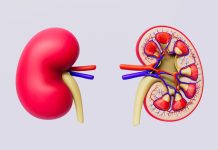
Insulin resistance, a condition where the body doesn’t respond well to insulin, is widely known as a key factor in diabetes.
But many people don’t realize that it can also increase the risk of some types of cancer, obesity, bad cholesterol levels, high blood pressure, heart disease, and a liver condition called metabolic dysfunction-associated steatotic liver disease, or MASLD.
Despite its importance, there’s still a lot we don’t understand about insulin resistance, making it hard to treat.
Dr. Elizabeth Speliotes, a specialist at Michigan Medicine and a professor at the University of Michigan Medical School, explains that researching insulin resistance is tough.
It involves complex and often expensive tests. While genetics play a role, scientists have only identified a few genes linked to this condition.
Dr. Speliotes and her team are determined to fill this gap in knowledge. They recently published a study in Nature Genetics, exploring the genetic aspects of insulin resistance. Antonino Oliveri, a researcher in Dr. Speliotes’ lab, talks about their innovative approach.
They used a simpler method to measure insulin resistance, looking at the ratio of serum triglycerides to high-density lipoprotein cholesterol (TG:HDL-C), which can be easily tested through blood samples.
This approach allowed them to conduct a much larger study using data from 402,398 Europeans in the U.K. Biobank, a huge collection of health and genetic information.
They identified over 350 locations in the human genome linked to the TG:HDL-C ratio, making it the largest study of its kind.
These genetic points are not just numbers. Ryan Rebernick, a co-author of the study, explains that they found how these genes affect different parts of the body, like the heart, liver, muscles, and even the reproductive system in women.
The genes highlight the importance of insulin signaling and growth, metabolism, and how the body handles fats. This information can lead to new ways of understanding insulin resistance.
The team discovered that problems in how the body stores and uses fat are closely linked to insulin resistance. They also identified five new subtypes of diseases related to these genetic variations.
These include brain processes, insulin and insulin growth, carbohydrate metabolism, fat creation, and fat balance.
Their research shows a strong connection between high TG:HDL-C ratios, insulin resistance, and metabolic syndrome—a condition that includes obesity, diabetes, and issues with cholesterol and blood pressure, leading to liver and heart diseases.
Dr. Speliotes believes their findings are a big step forward. Before this study, our understanding of what causes insulin resistance and metabolic syndrome was very limited. But now, they have a clearer picture of these diseases’ pathophysiology.
This new knowledge could lead to better ways to identify and treat the causes of these common conditions, offering hope for more effective and safer treatments.
If you care about diabetes, please read studies about Vitamin D and type 2 diabetes, and what you need to know about avocado and type 2 diabetes.
For more information about diabetes, please see recent studies about how to eat to prevent type 2 diabetes, and 5 vitamins that may prevent complication in diabetes.
The research findings can be found in Nature Genetics.
Copyright © 2024 Knowridge Science Report. All rights reserved.



